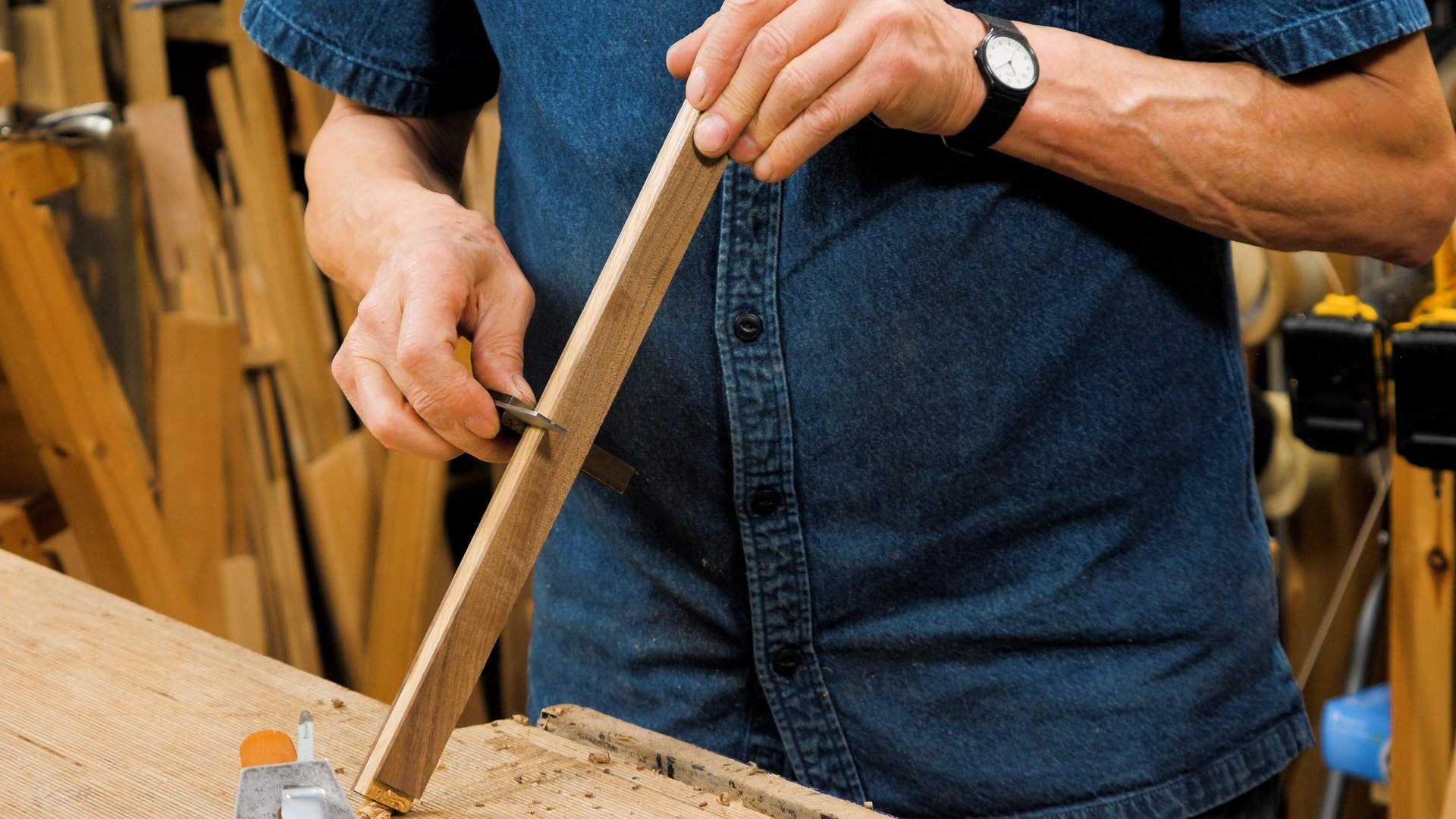Sellers Home Mirror Frame: Episode 3
Posted 31 May 2023
This is an episode in a paid series. Want to watch it? You just need to sign up as a paid member, and you can enjoy this video and many other videos we think you will love.
Appliquéd facings can transform the ordinary into extraordinary work, and that is what happens in this episode as we take strips of wood to create facings to decorate our mirror frame. Of course, as with many things woodworking, there are many ways we can achieve the same result, but working with hand tools, Paul created the exact facade he wanted; and in the process here, he passed on these methods and techniques to you as custodians for future woodworkers you will come to know through the years ahead. In this episode, you will see the levels of fineness we can achieve with only basic hand tools. The levels of satisfaction you will get are immeasurable.


What if you don’t own a caliper to measure the width or thickness for those thin pieces?
If you have no callipers and no option to get them just use a marking gauge set to the thinnest part and use it to detect thicker areas. Then spot plane to it.
Tickled to see my best guesses for how best to rip delicate pieces be demonstrated right here!
The days of paying a small fortune for decent or even “cheap” calipers are long gone. The more I remember to use the ones I have, the less frustrating and more effective my efforts become. They work for beginners just as well as for Paul himself!
For the tolerances required for most woodworking, even a pair of super-cheap plastic calipers will do the job. However, I just got a stainless steel 150mm dial caliper online for $35. They’re not (necessarily) expensive any more. I got a dial caliper rather than a simple caliper mainly because my eyesight isn’t that great any more, and the dial makes reading fractions of a millimetre easier for me.
Digital calipers are even cheaper, and they’re very easy to read, but I don’t like them much because Inevitably whenever I want to use them I find that their batteries have gone flat.
When I did this build, I made the whole facade together (like Paul did with the 3-piece banding) out of 4/4 stock and that worked well. I didn’t have to tape/glue up the thin pieces and had the added benefit of making sure each piece lined up.
Me too. The lining up was the key advantage for me.
Of course, Paul demonstrated how to deal with fiddly glue ups too with tape so 2 options covered.
(If the scrap bands I had from previous dimensioning were a bit longer I’d have used the tape option to use them up.)
I also found it easier to plane the face veneers with 2 strips of 3mm plywood either side (or wooden rulers or acrylic or….) but freehanding works for skill building.
A question. Paul glues up the edge pieces (two thin pieces of walnut with one thicker piece of oak) into a block. He then slices this block into thin strips which he then glues to a previously cut thin piece of oak. He has to glue all these thin pieces together using tape, which seems a bit tricky. Why not make the entire thing out of thicker pieces, which can be easily glued together into a block, and then slice off thin sheets all at once? That is, why not use the same approach he used for the edge pieces for the entire thing? That would make the glue up easier. Am I missing something?
Oh, I see Bailey described the same thing I was wondering about.